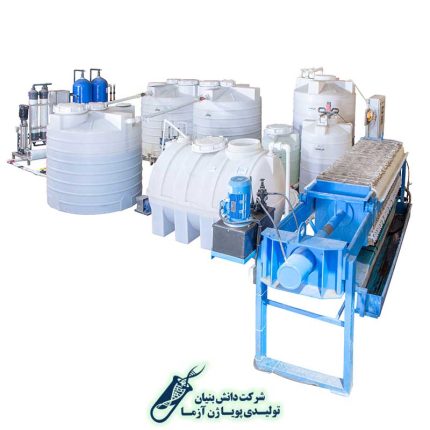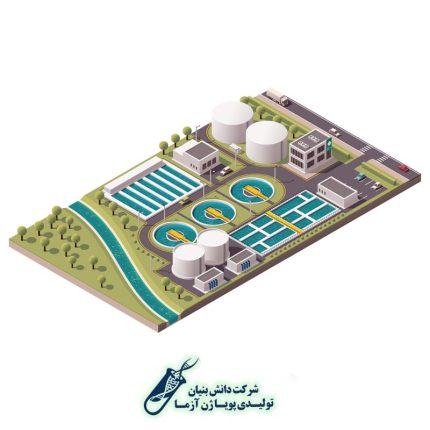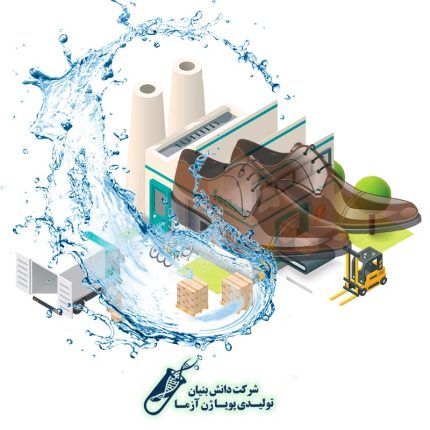Textile wastewater treatment system
Textile and dyeing industries are one the largest consumers in the world, so they produce huge amount of wastewater and this wastewater have wide range of pollutants such as pigments and auxillary materials like dispersants, homogenizers, carriers, salts, acids, alkalis, and sometimes heavy metals. Similar to most industrial waste treatment packages, there are two main steps in textile and dyeing waste treatment. chemical and physical treatment and then biological treatment (biofilter). In the physical and chemical phase of purification the first step is adjusting the pH in neutral range, and then due to the high turbidity the chemical coagulation method is used to remove the pigments and suspended particles. In the last step an aerobic biofilter stage is used to remove the remaining materials. The image of a textile wastewater treatment system with a capacity of 100 cubic meters per day is shown below.
Treatment of Municipal sewage
Treatment of Municipal sewage
According to the urgent need for urban and domestic waste treatment, many methods have been investigated and done, among the most important of these methods are activated sludge, extensive aeration, MBBR, MBR, and SBR.
Wastewater treatment system for leather industries
Biofilter system in leather industry
Leather industries have high water consumption so they release enormous wastewater in environment, and usually have high amount of BOD, COD, TDS, sulfide, ammonium, nitrate and heavy metals such as chrome, industrial salts, organic compounds and skin waste. In case that this waste enters into the environment without treatment, it causes severe damage to the environment. PGA biofiltration, using a combination system physical, chemical and biological methods based on biofilter is capable of purifying of sewage of leather industry up to the standards of the Environmental Protection Organization and can be used again.






